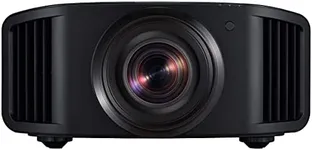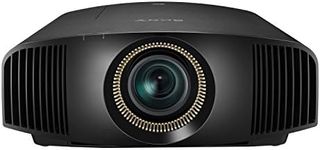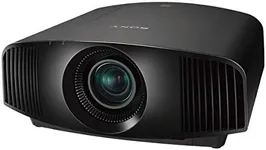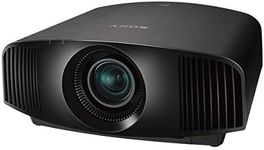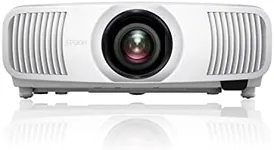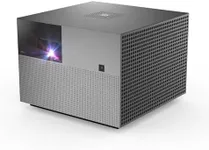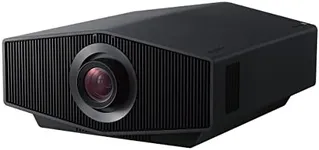Buying Guide for the Best Projector For Home Theaters
Choosing the right projector for your home theater can significantly enhance your viewing experience. The key is to understand the various specifications and how they align with your needs. Here are the essential specs to consider when selecting a projector for your home theater setup.ResolutionResolution refers to the number of pixels that make up the image on the screen. Higher resolution means more detail and clarity. Common resolutions include 1080p (Full HD), 4K, and even 8K. For most home theaters, 1080p is sufficient, but if you want the best possible picture quality, especially on larger screens, 4K is the way to go. Consider what content you will be watching and the size of your screen when choosing the resolution.
Brightness (Lumens)Brightness, measured in lumens, indicates how much light the projector can produce. This is crucial for ensuring a clear image, especially in rooms with some ambient light. Projectors with 1,500 to 2,500 lumens are generally good for dark rooms, while those with 3,000 lumens or more are better for rooms with more light. Think about your room's lighting conditions and choose a brightness level that will provide a clear image in your specific environment.
Contrast RatioContrast ratio measures the difference between the darkest blacks and the brightest whites a projector can produce. A higher contrast ratio means more vibrant and detailed images. Ratios like 10,000:1 or higher are ideal for home theaters, as they provide deeper blacks and more vivid colors. If you plan to watch a lot of movies or shows with dark scenes, a higher contrast ratio will enhance your viewing experience.
Throw DistanceThrow distance is the distance between the projector and the screen. It determines how large the image will be at a given distance. Projectors are categorized into short throw, long throw, and ultra-short throw. Short throw projectors can create large images from a short distance, making them ideal for smaller rooms. Long throw projectors need more space but can produce larger images. Ultra-short throw projectors can be placed very close to the screen and still produce a large image, perfect for tight spaces. Measure your room and decide which throw distance fits best.
Lamp LifeLamp life indicates how long the projector's lamp will last before it needs to be replaced. This is measured in hours. Longer lamp life means less frequent replacements and lower maintenance costs. Typical lamp life ranges from 2,000 to 5,000 hours, but some projectors offer up to 20,000 hours with LED or laser technology. Consider how often you will use the projector and choose one with a lamp life that suits your usage.
ConnectivityConnectivity options determine how you can connect your projector to other devices like Blu-ray players, gaming consoles, or streaming devices. Common connections include HDMI, USB, and wireless options. Ensure the projector has the necessary ports for your devices. If you plan to stream content, look for projectors with built-in Wi-Fi or smart features.
Keystone CorrectionKeystone correction helps adjust the image if the projector is not perfectly aligned with the screen, preventing distortion. This feature is useful if you cannot place the projector directly in front of the screen. Look for projectors with both vertical and horizontal keystone correction for more flexibility in placement.
Built-in SpeakersWhile built-in speakers can be convenient, they often do not provide the best sound quality. If you are serious about your home theater experience, consider using external speakers or a sound system. However, if you need a simple setup or plan to use the projector for casual viewing, built-in speakers can be a useful feature.
